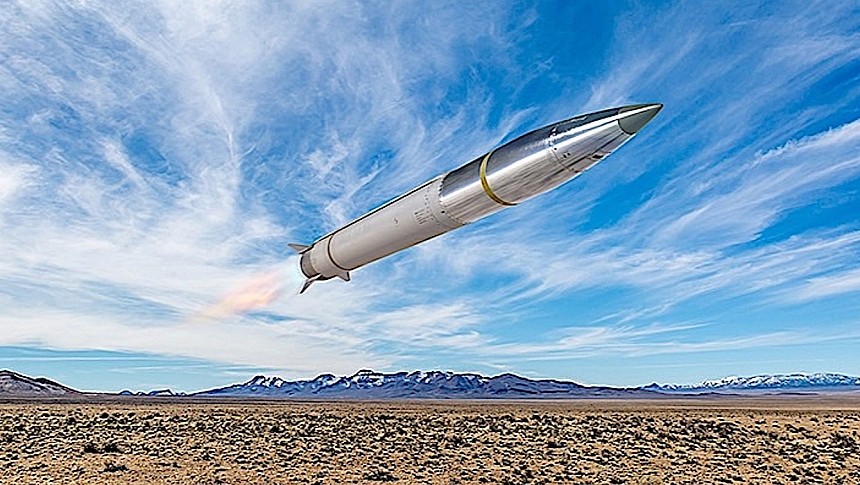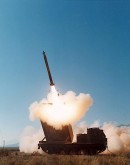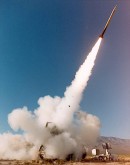The war still waging over in Ukraine has made a lot of new things clear for military commanders around the world, but it also confirmed long-known facts about warfare. Like how much of a difference the ability to strike from afar can make on the battlefield.
The role of hitting targets far away fell until recently on the shoulders of the artillery, or more specifically on guns capable of throwing projectiles to enemy lines and beyond. Artillery is still used today, but now more than ever that is done with missiles and rockets, thrown at the enemy from any platform imaginable.
One of America's favorite platforms, and heavily used today in Ukraine, is the HIMARS. Short for High Mobility Artillery Rocket System, it can fire a wide assortment of rockets, missiles, and bombs. Among them is the Lockheed Martin-made Guided Multiple Launch Rocket System (GMLRS).
The family of munitions presently comprises two variants, the Unitary and Alternative Warhead, each capable of hitting targets located some 43 miles (70 km) away. A third variant, called Extended-Range (ER GMLRS) is at the moment in the process of being tested for field use.
We've talked about this rocket before, as tests conducted so far, including with the weapon fired from a HIMARS, revealed it can easily reach a distance of 50 miles (80 km). And it did so while meeting all requirements when it comes to flight trajectory, range, accuracy from launch to impact, and warhead lethality.
This week's update on the ER GMLRS talks about yet another test having been conducted at the White Sands Missile Range in New Mexico. A HIMARS was used once more to fire the rocket, and this time, for the first time in a test for flight trajectory this long, the rocket flew to its maximum range, 93 miles (150 km).
We're told the test proved the improved GMLRS can maintain flight trajectory for this long and, more importantly, that it can hit the target with "the precision GMLRS is known for."
Separately, something called Stockpile to Target Sequence (STS) testing was performed, meaning the rocket was subjected to simulated "cumulative effects ER GMLRS will meet in the field between factory and launch for the life of the system." The reason behind this test was to see if the missile itself and launch pod container were durable enough.
It's not clear yet when the ER GMLRS will be deployed in service of the American military or its allies, but Lockheed Martin says it expects a "rapid timeline."
Since the rockets of this kind were first used in 2005 in Iraq, Lockheed Martin says it made 60,000 of them. Both existing versions will continue to be made for the foreseeable future. The estimated cost of such a munition in 2022 was between $160,000 and $500,000 depending on the variant.
One of America's favorite platforms, and heavily used today in Ukraine, is the HIMARS. Short for High Mobility Artillery Rocket System, it can fire a wide assortment of rockets, missiles, and bombs. Among them is the Lockheed Martin-made Guided Multiple Launch Rocket System (GMLRS).
The family of munitions presently comprises two variants, the Unitary and Alternative Warhead, each capable of hitting targets located some 43 miles (70 km) away. A third variant, called Extended-Range (ER GMLRS) is at the moment in the process of being tested for field use.
We've talked about this rocket before, as tests conducted so far, including with the weapon fired from a HIMARS, revealed it can easily reach a distance of 50 miles (80 km). And it did so while meeting all requirements when it comes to flight trajectory, range, accuracy from launch to impact, and warhead lethality.
This week's update on the ER GMLRS talks about yet another test having been conducted at the White Sands Missile Range in New Mexico. A HIMARS was used once more to fire the rocket, and this time, for the first time in a test for flight trajectory this long, the rocket flew to its maximum range, 93 miles (150 km).
We're told the test proved the improved GMLRS can maintain flight trajectory for this long and, more importantly, that it can hit the target with "the precision GMLRS is known for."
Separately, something called Stockpile to Target Sequence (STS) testing was performed, meaning the rocket was subjected to simulated "cumulative effects ER GMLRS will meet in the field between factory and launch for the life of the system." The reason behind this test was to see if the missile itself and launch pod container were durable enough.
It's not clear yet when the ER GMLRS will be deployed in service of the American military or its allies, but Lockheed Martin says it expects a "rapid timeline."
Since the rockets of this kind were first used in 2005 in Iraq, Lockheed Martin says it made 60,000 of them. Both existing versions will continue to be made for the foreseeable future. The estimated cost of such a munition in 2022 was between $160,000 and $500,000 depending on the variant.






